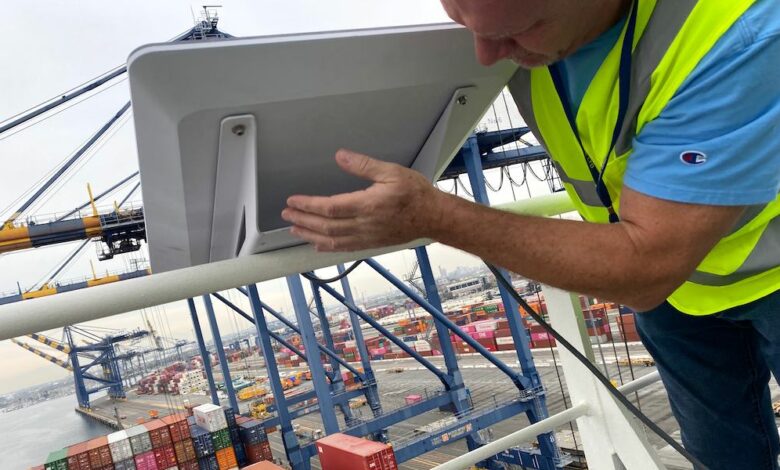‘As connected as any office or home’: Anglo-Eastern gives rave Starlink review

Anglo-Eastern, one of the world’s largest shipmanagers, has made the biggest on the record investment in Starlink at sea to date.
The Hong Kong-based manager has earmarked at least 200 installations of Elon Musk’s new satellite communication system across its fleet by year-end.
Last week Anglo-Eastern had the first formal installation of Starlink’s maritime broadband service, part of a preliminary order covering a dozen vessels of various ship types and trading patterns, so that the service can be fully trialled across a number of scenarios before broader roll-out in the coming months.
Starlink uses low-orbit satellites, allowing higher speed and capacity at a lower cost than conventional communications.
“We quietly started our journey a year ago, when Starlink first announced its RV service. Once installed on several vessels, we knew immediately it was a game-changer,” said Torbjorn Dimblad, chief information officer of Anglo-Eastern. “Overnight, these ships became as connected as any office or home, affording the crew unprecedented access to friends and family while enabling an entirely new level of collaboration between ship and shore.”
Dimblad said the introduction of Starlink Maritime comes a perfect time.
“Part of our digitalisation journey was to standardise our hardware on board. Since 2020, we have commissioned over 600 data centres and replaced 5,000 workstations across the fleet. The underlying infrastructure is now in place to leverage the accelerated connectivity,” Dimblad said.
Bjorn Hojgaard, CEO of Anglo-Eastern, commented: “The addition of Starlink’s LEO network – and OneWeb and Project Kuiper thereafter – will change life onboard in a way that we have never experienced in the history of shipping. Soon seafarers will be always-on, enjoying the same connectivity that we ashore have been used to. The ship will become a seamless extension of the office, where members of the team just happen to be closer to the machinery.”
Hojgaard said he believed Starlink and rivals such as OneWeb will make the industry safer and more attractive for current and future generations.
“The elusive promise of the connected vessel has finally arrived,” a press release from Anglo-Eastern concluded.
A host of cruise companies as well as Japan’s two largest shipping lines are among the early sign-ups to Starlink, which started marketing to maritime customers around nine months ago.

At the expense of ruining the fields of astronomy and astrophotography. And starting to ruin even Hubble telescope research. When you add to this, spacex junk is falling to earth in chunks big enough to kill many people should it have fallen on a city. Then there’s the brightening of the sky at night which will interfere with our nocturnal animals and human circadian rhythms. The short life of just 5 years,likely to be less through the more than anticipated fuel usage in collision avoidance, leaving junk in space making it increasingly difficult for important satellites and space craft to safely get through and the fact when these burn up (of they do), they are releasing very toxic gases exactly where you don’t want them, that very likely are depleting the ozone layer worse than the now banned fluorocarbons… Low orbit satellites come at a very very high price.
Lol, taking your logic, as a fellow astronomer myself, your logic seems to favor astronomy over human process.
If we used your logic, then there should be no lights at night, increasing road accidents, which could lead legsilsting the need to shut down human activity to favor a small percentage of global populace for this wonderful hobby.
I find it funny you leave out details just to justify your extreme hate of Starlink and making Starlink sound like it has no positive net effect whatsoever.
That is pretty disingenuous, and one sided, isn’t it?
Secondly, you talk about space trash and the fact these satellites are ONLY VISIBLE when their hall thrusters are active, and all efforts were made to reduce the reflectivity of these satellites specially when at their proper orbits, when their hall thrusters are off.
In terms of collision avoidance, and reentry, you seem to forget that none of the reentered disposed Starlinks have survived reentry yet you use a baseless assumption that despite starlink satellite’s small sizes they survive reentry which all starlink SATs will undergo, regardless of fuel status, because of the low altitude of their orbits, orbital decay due to atmospheric drag.
I find it surprising how one sided people are and very comedic to see people in the astronomy hobby use logical fallacies and lie by ommision in their acts of victimization and attention.